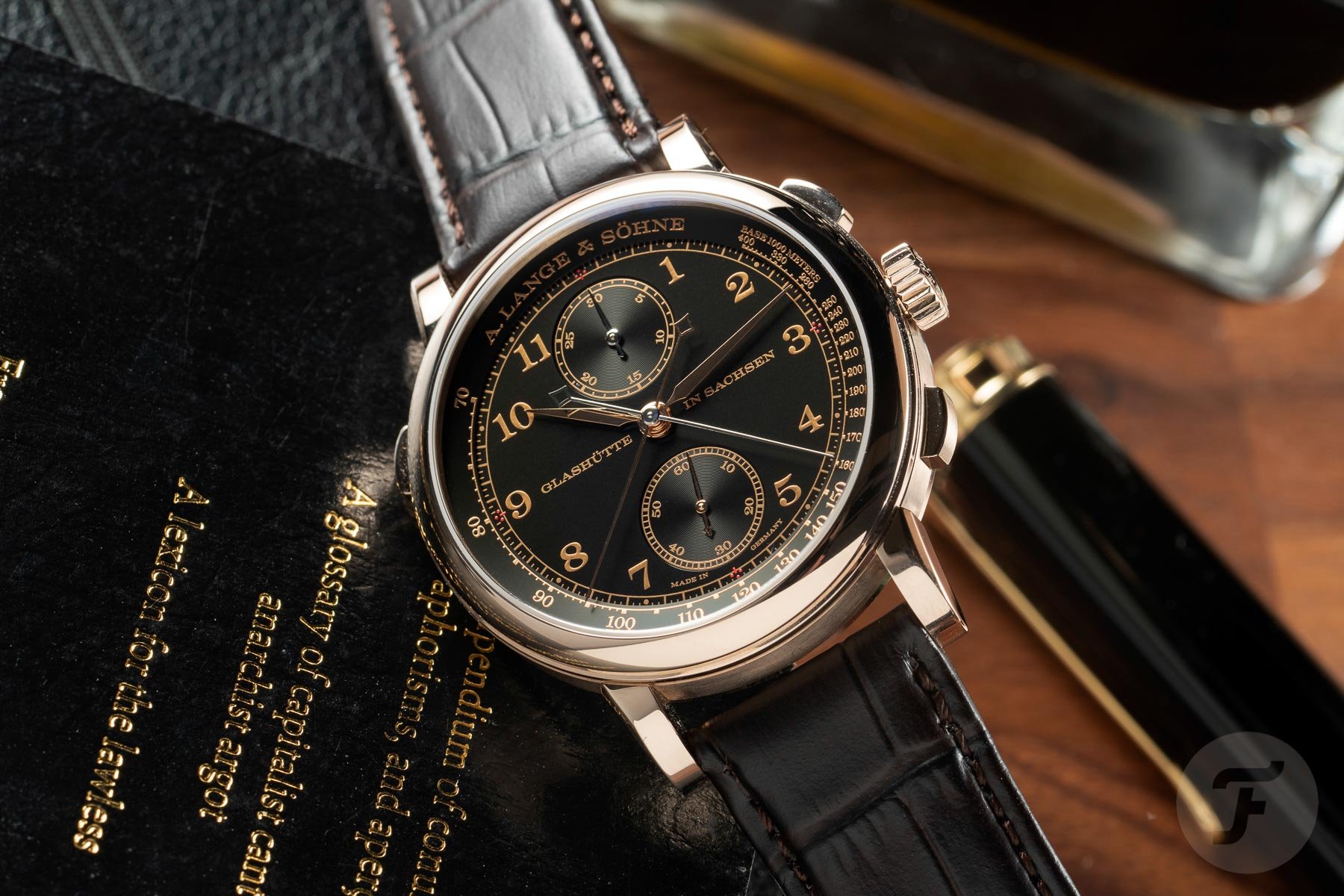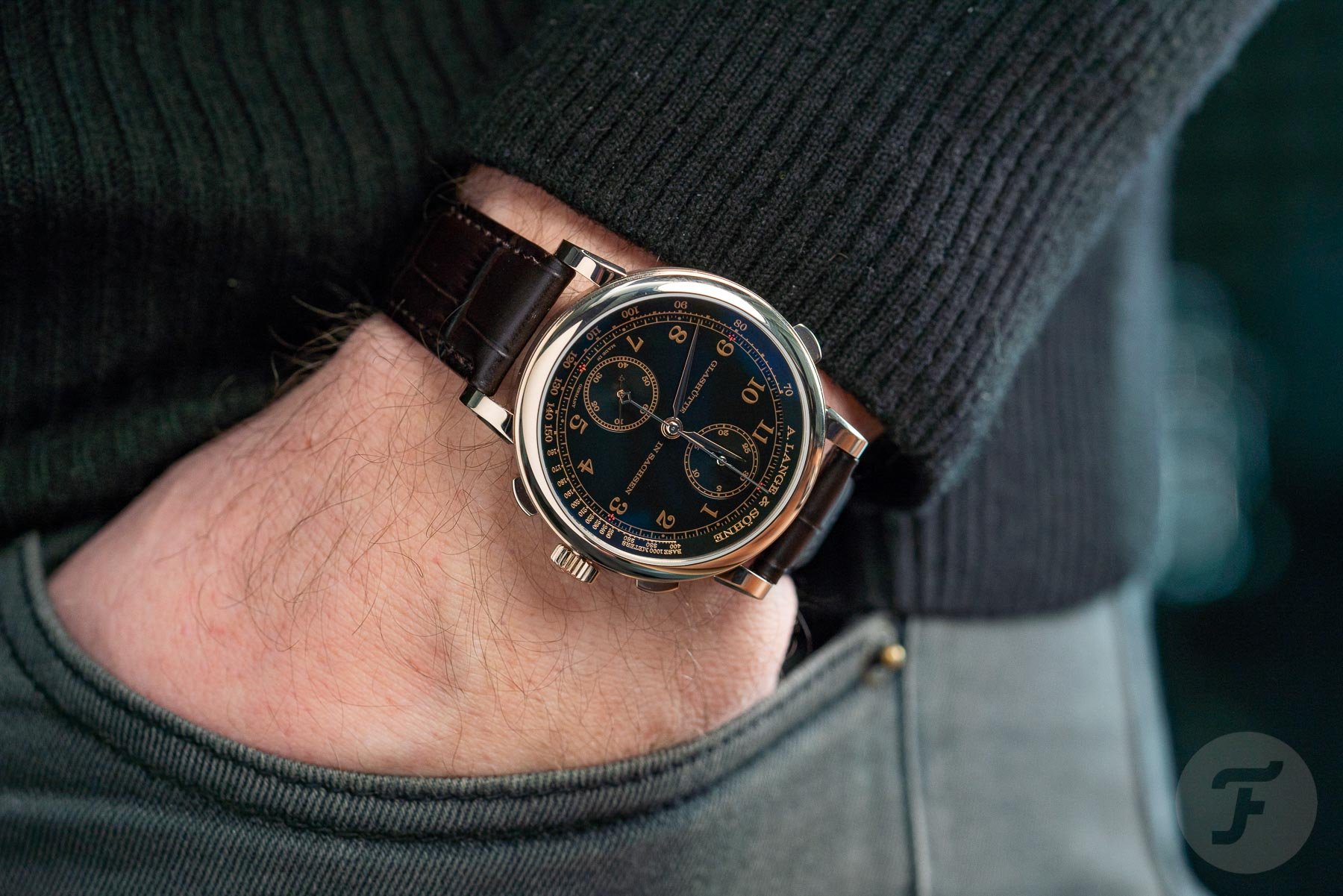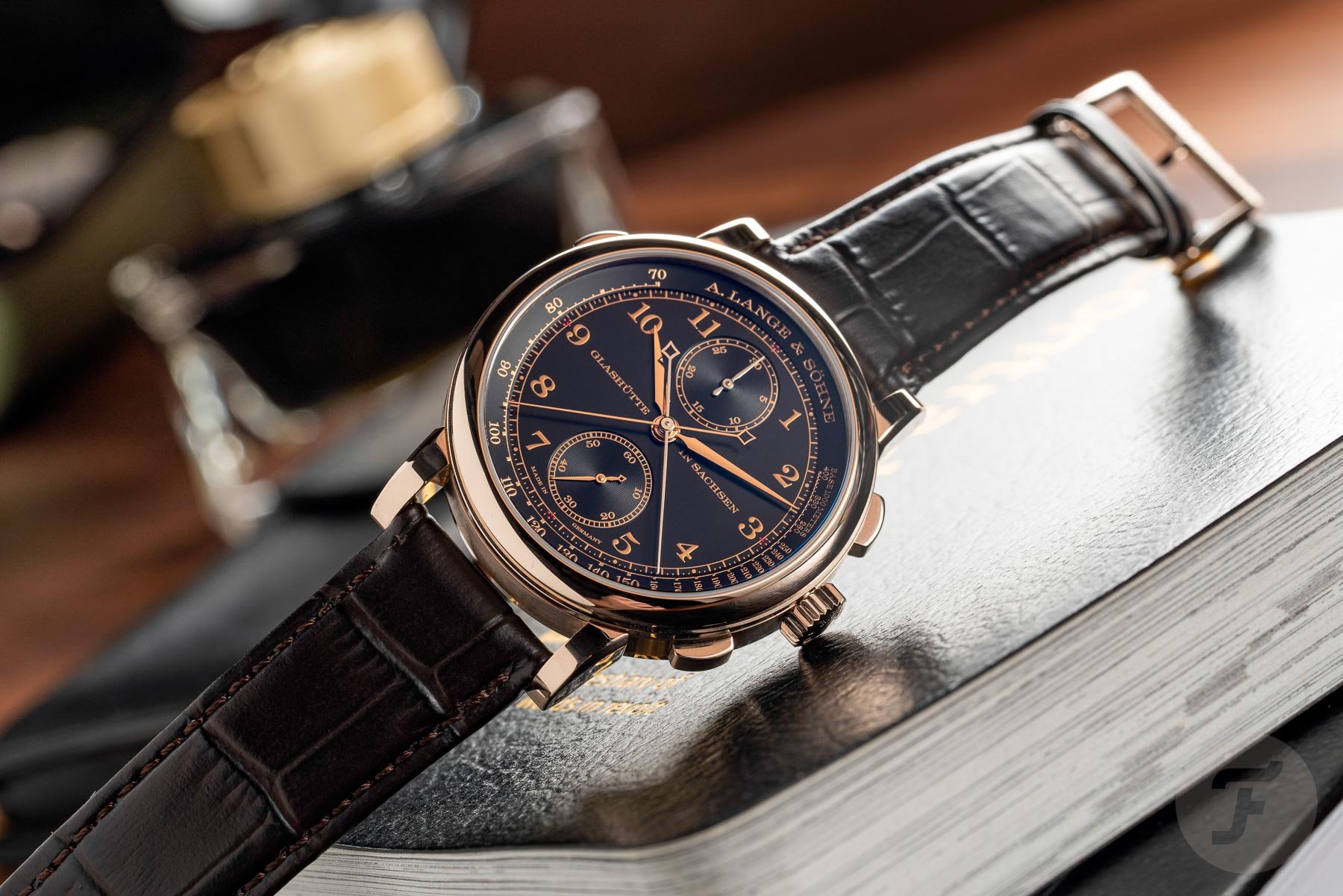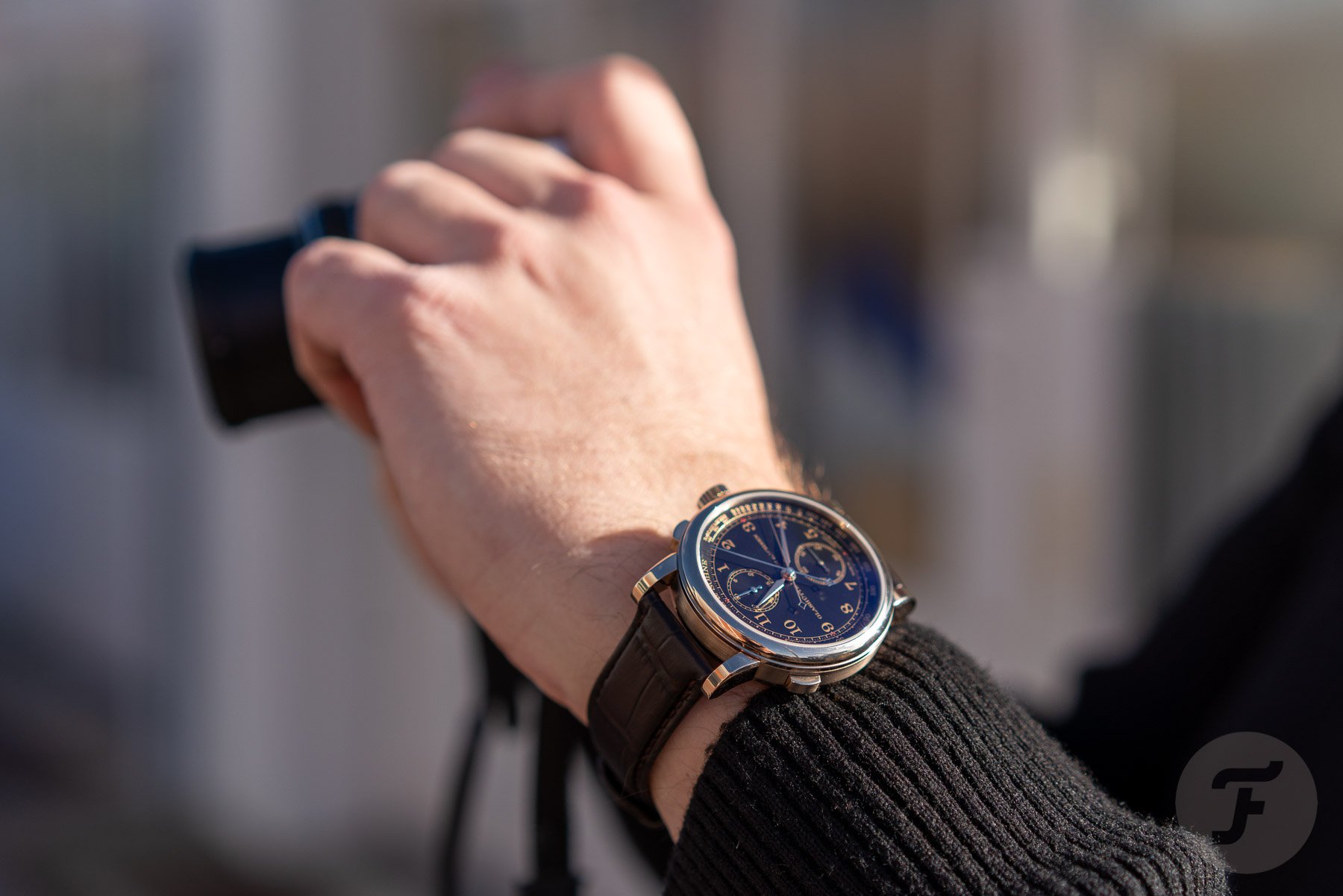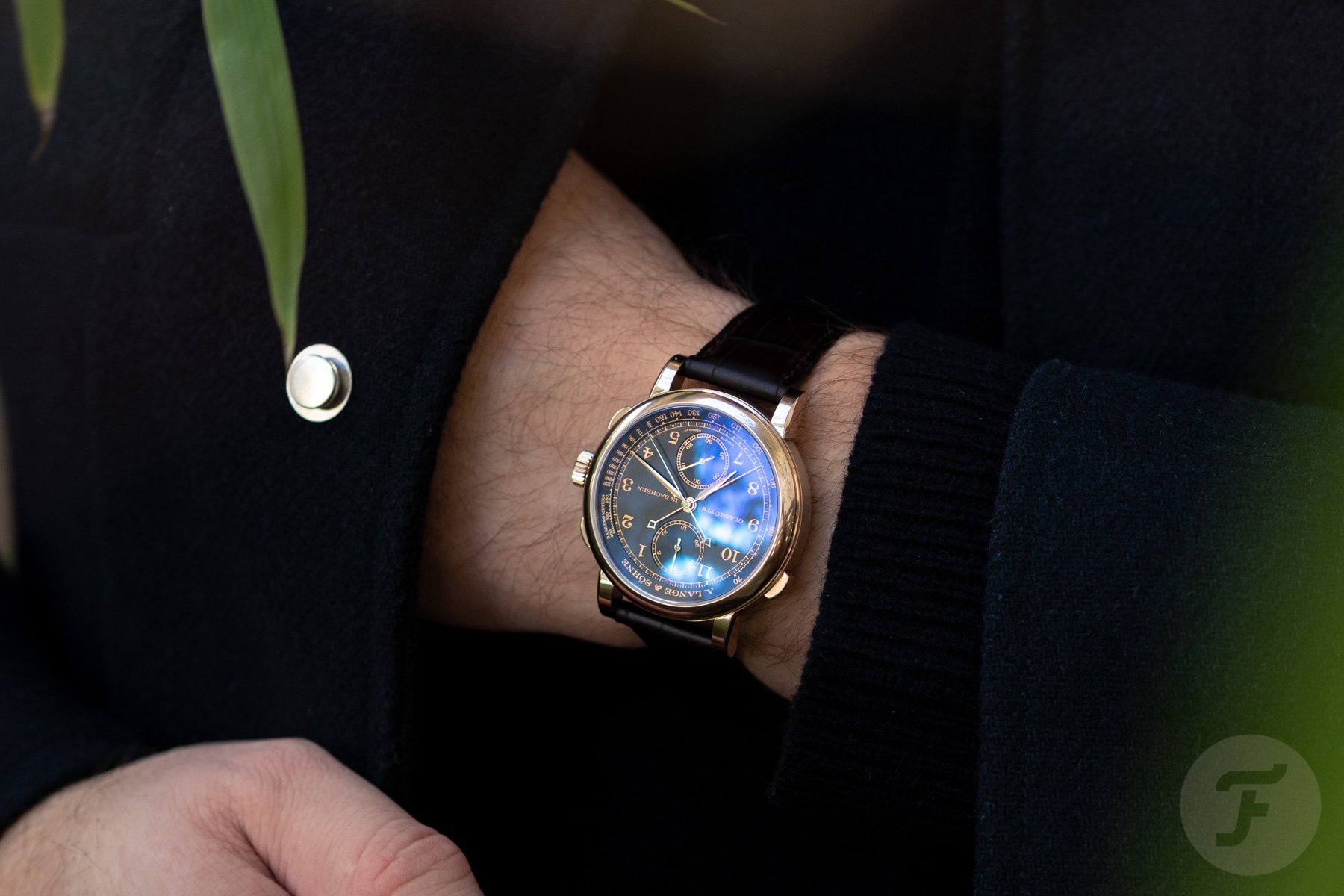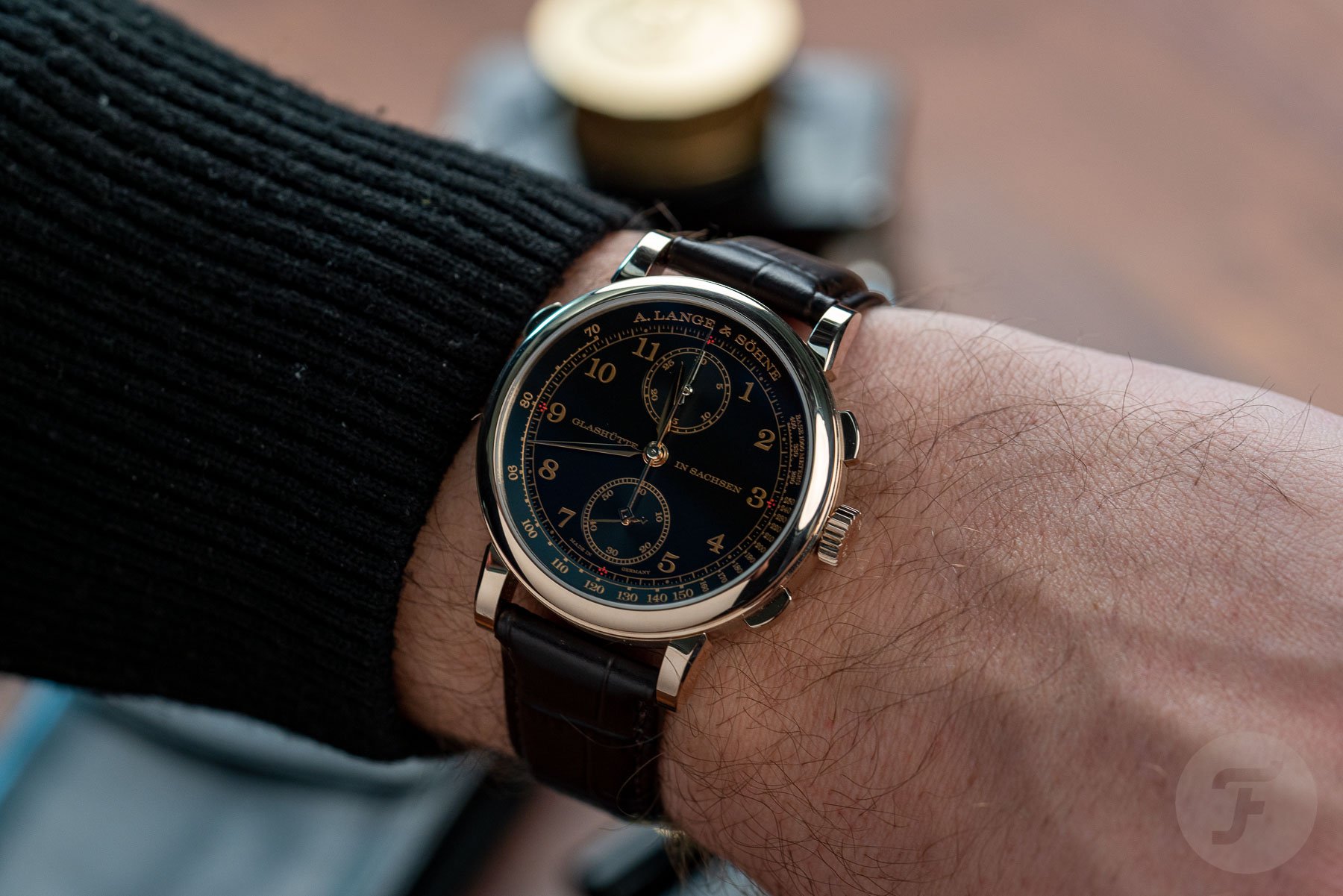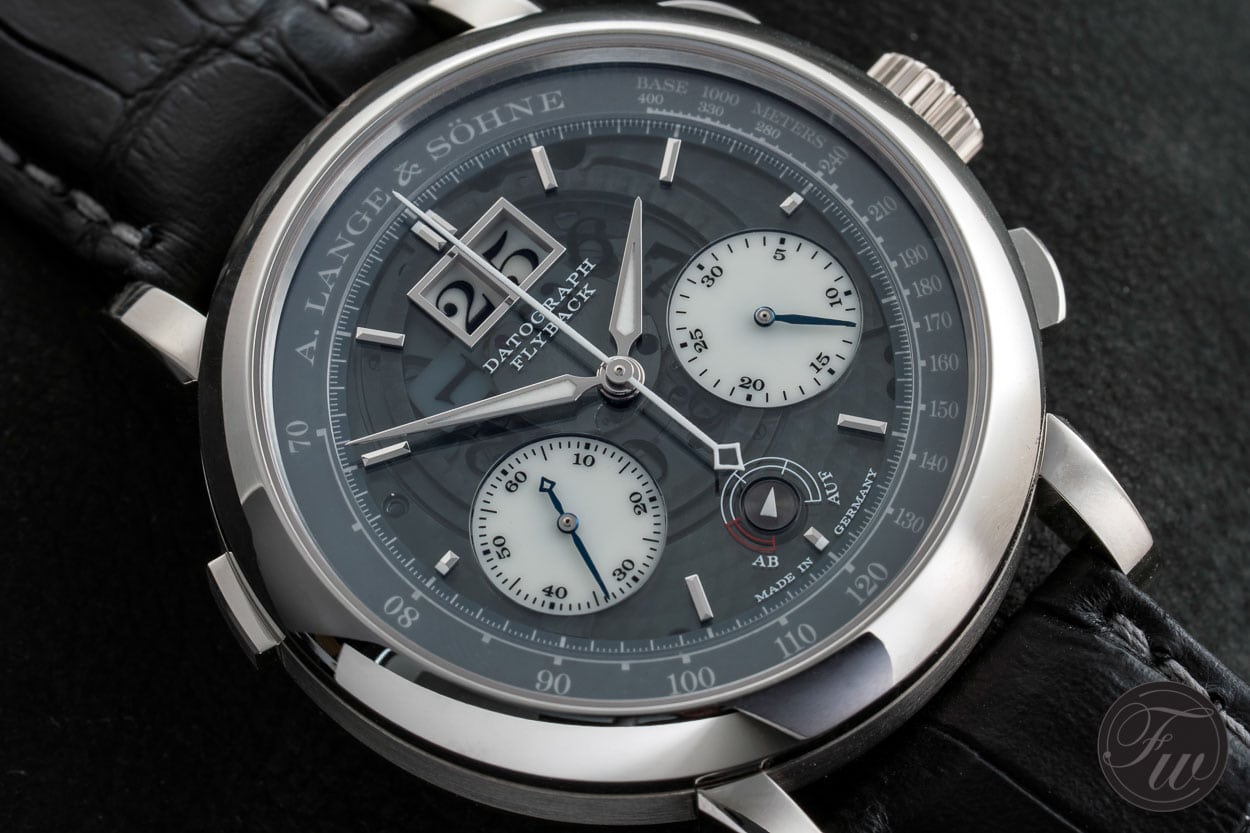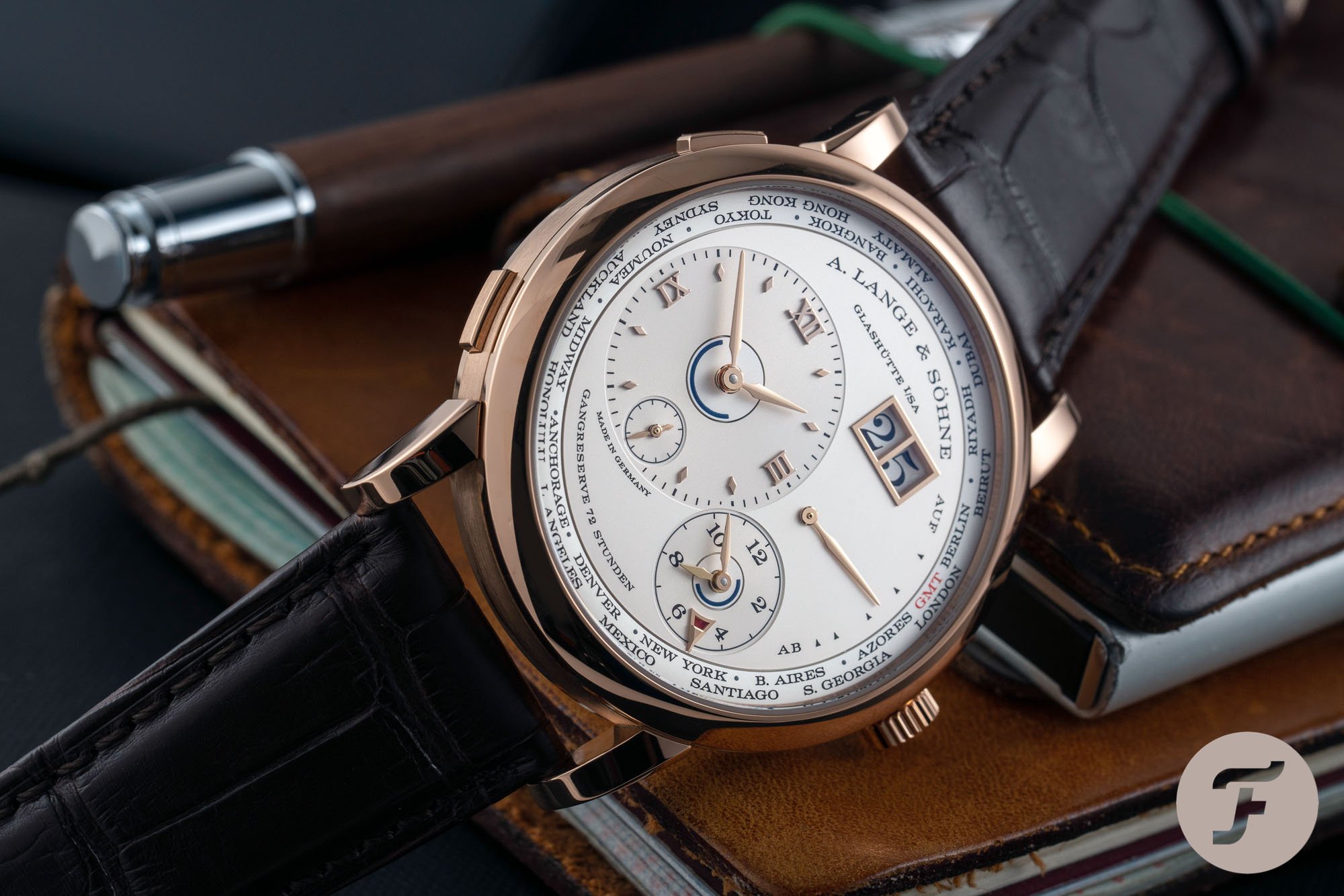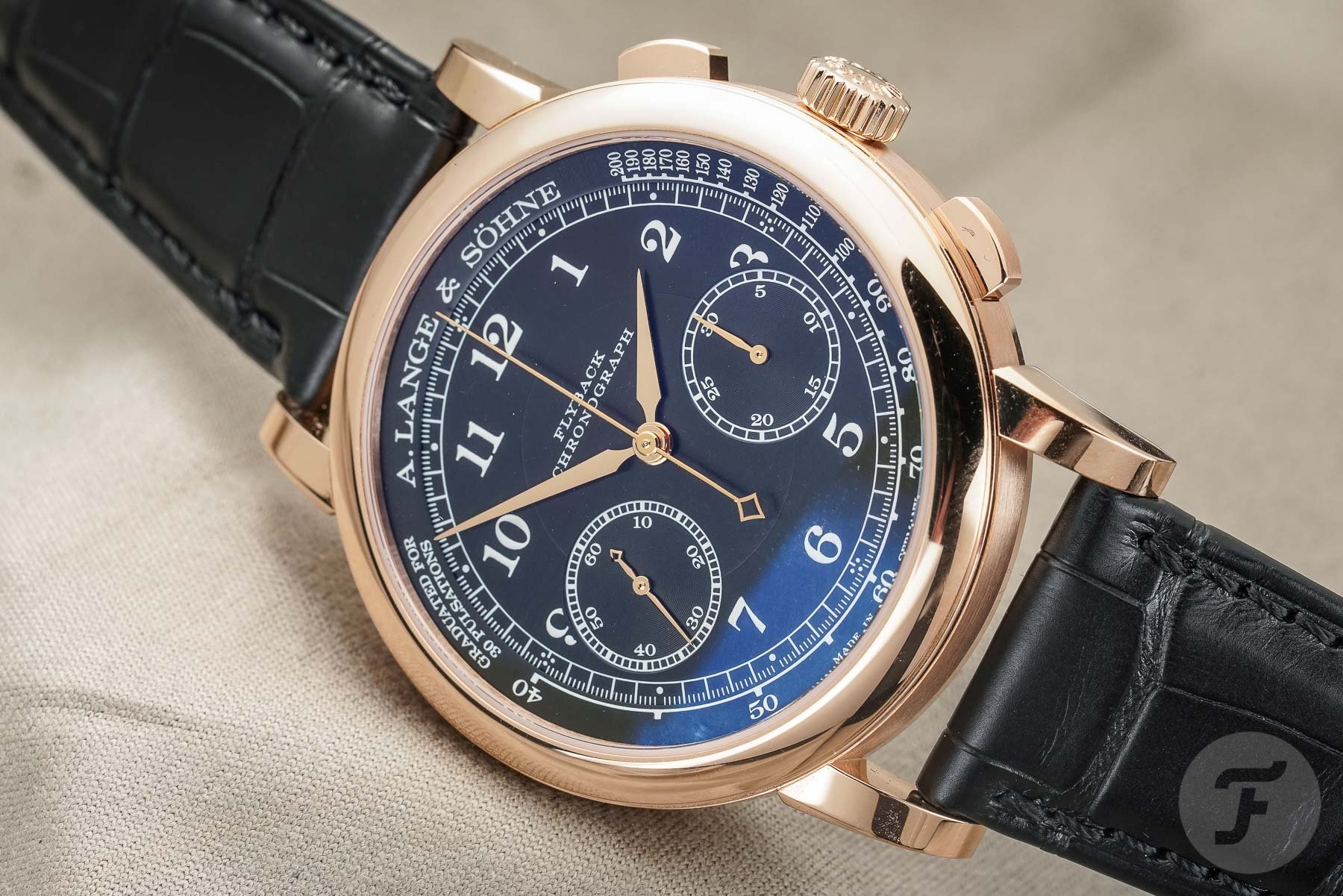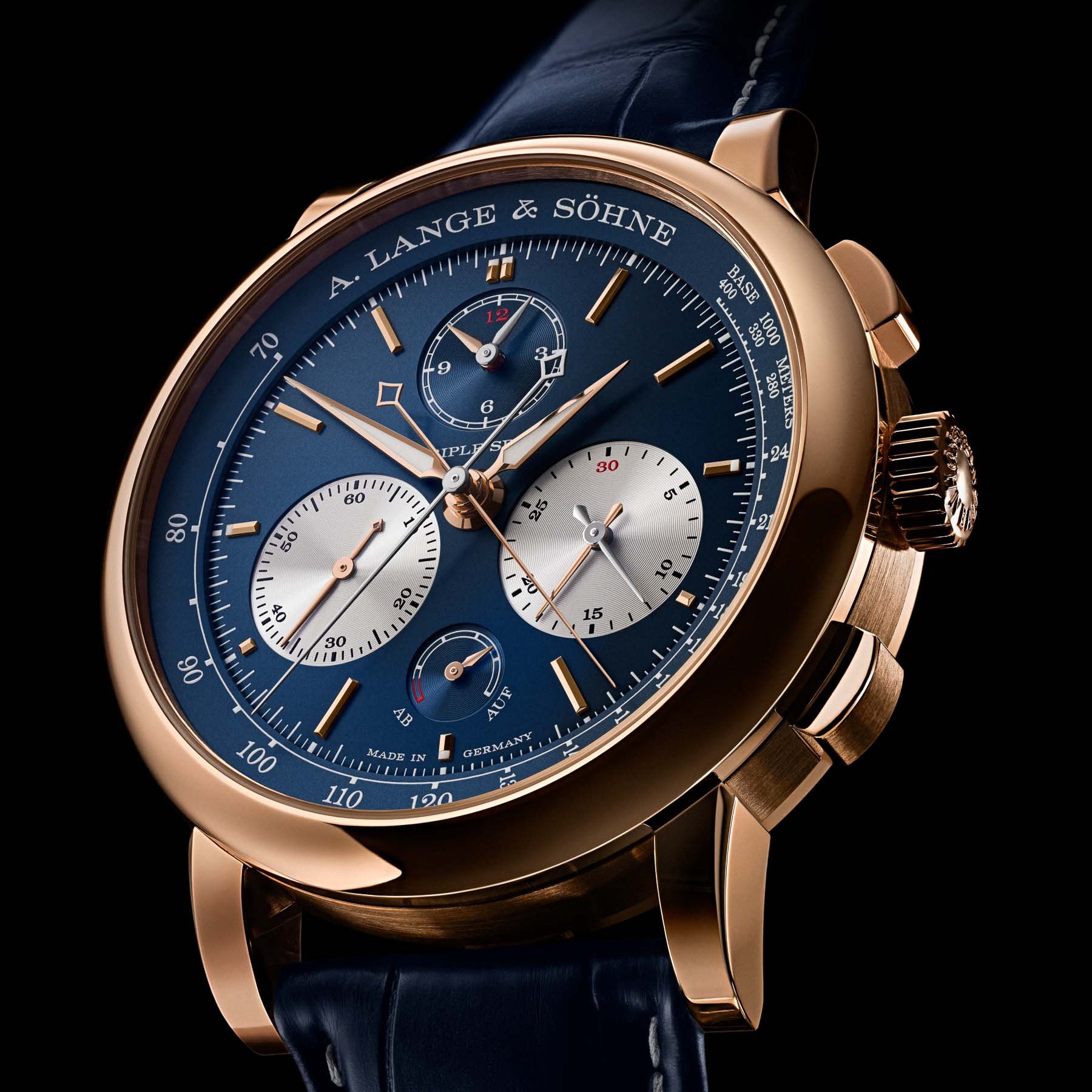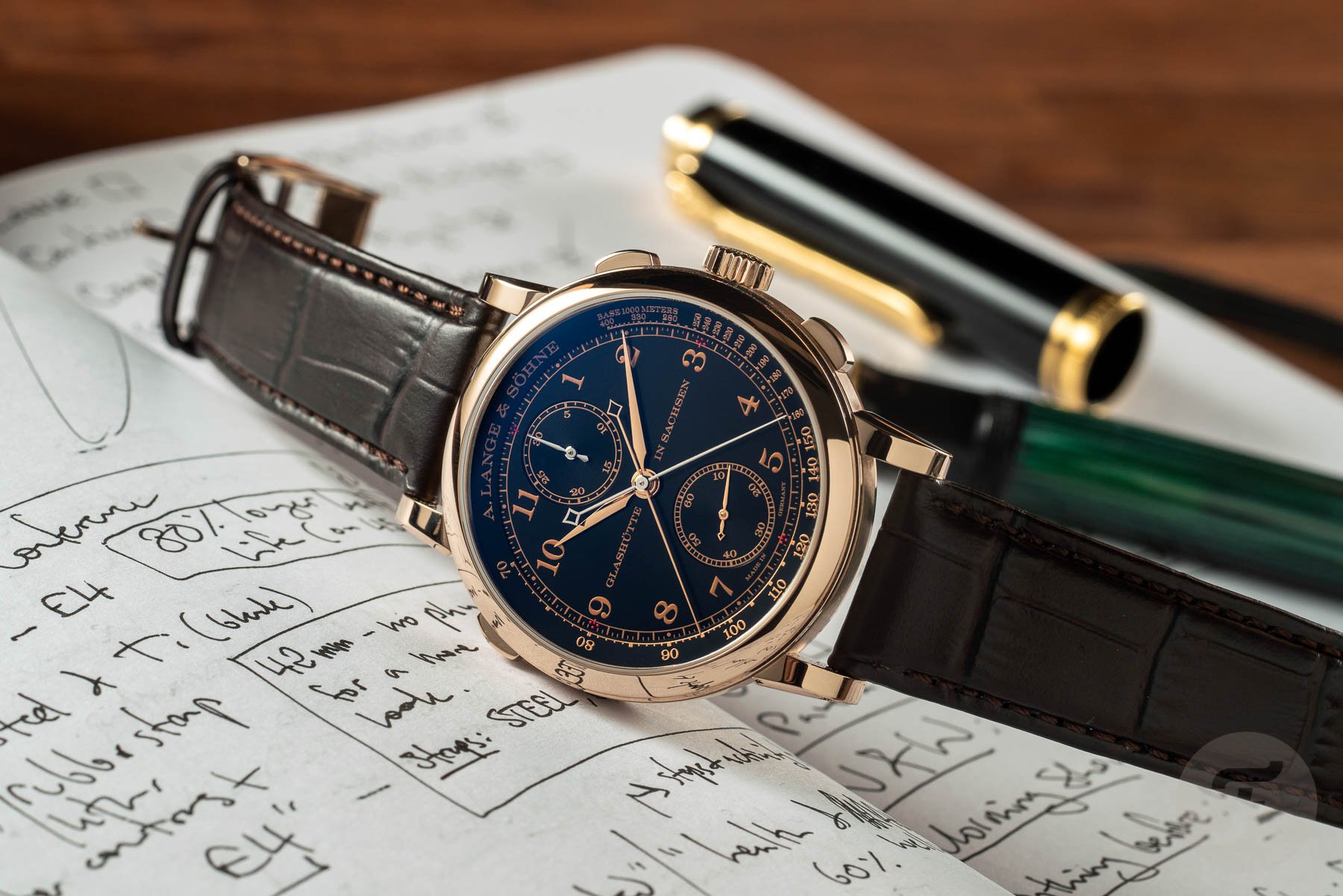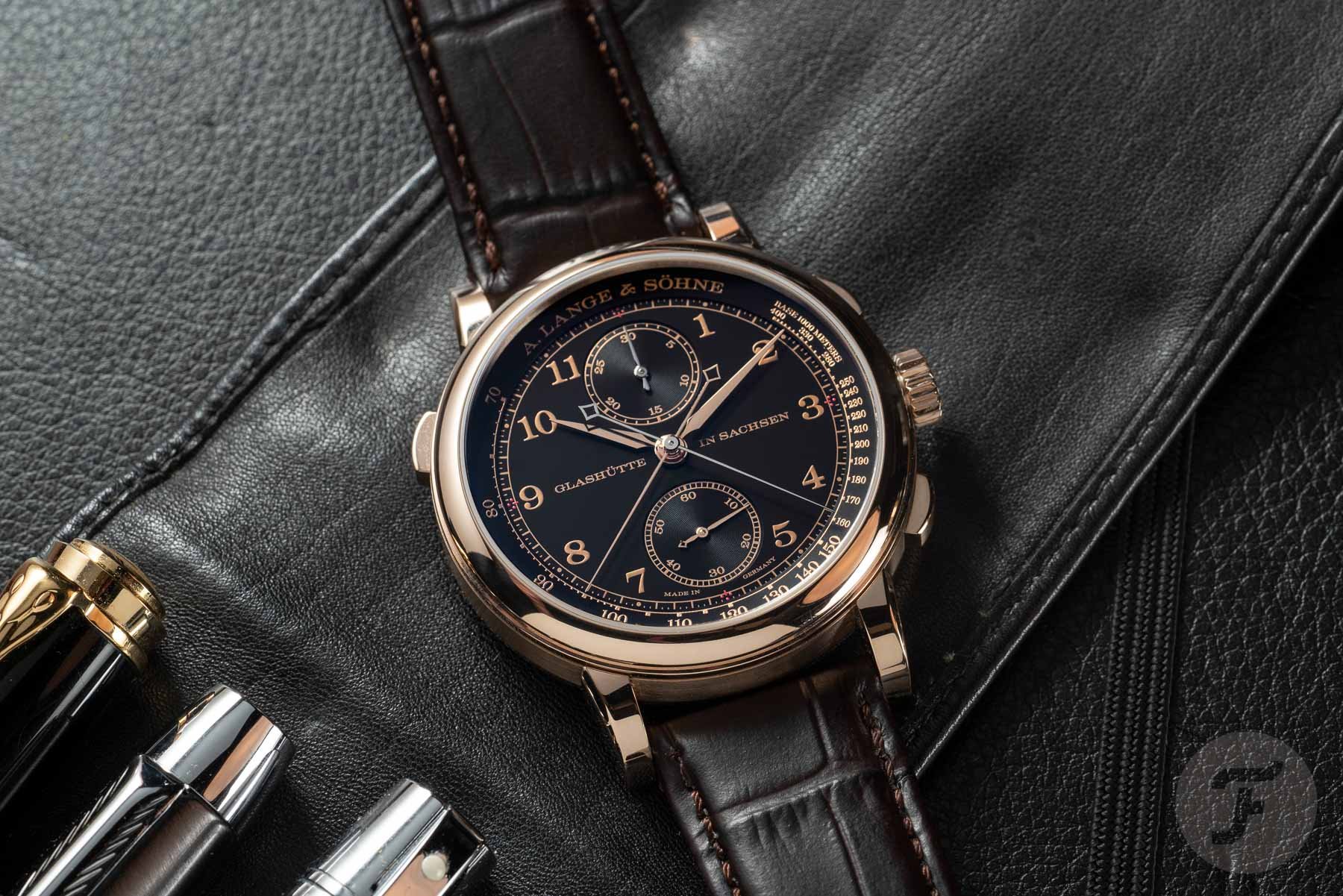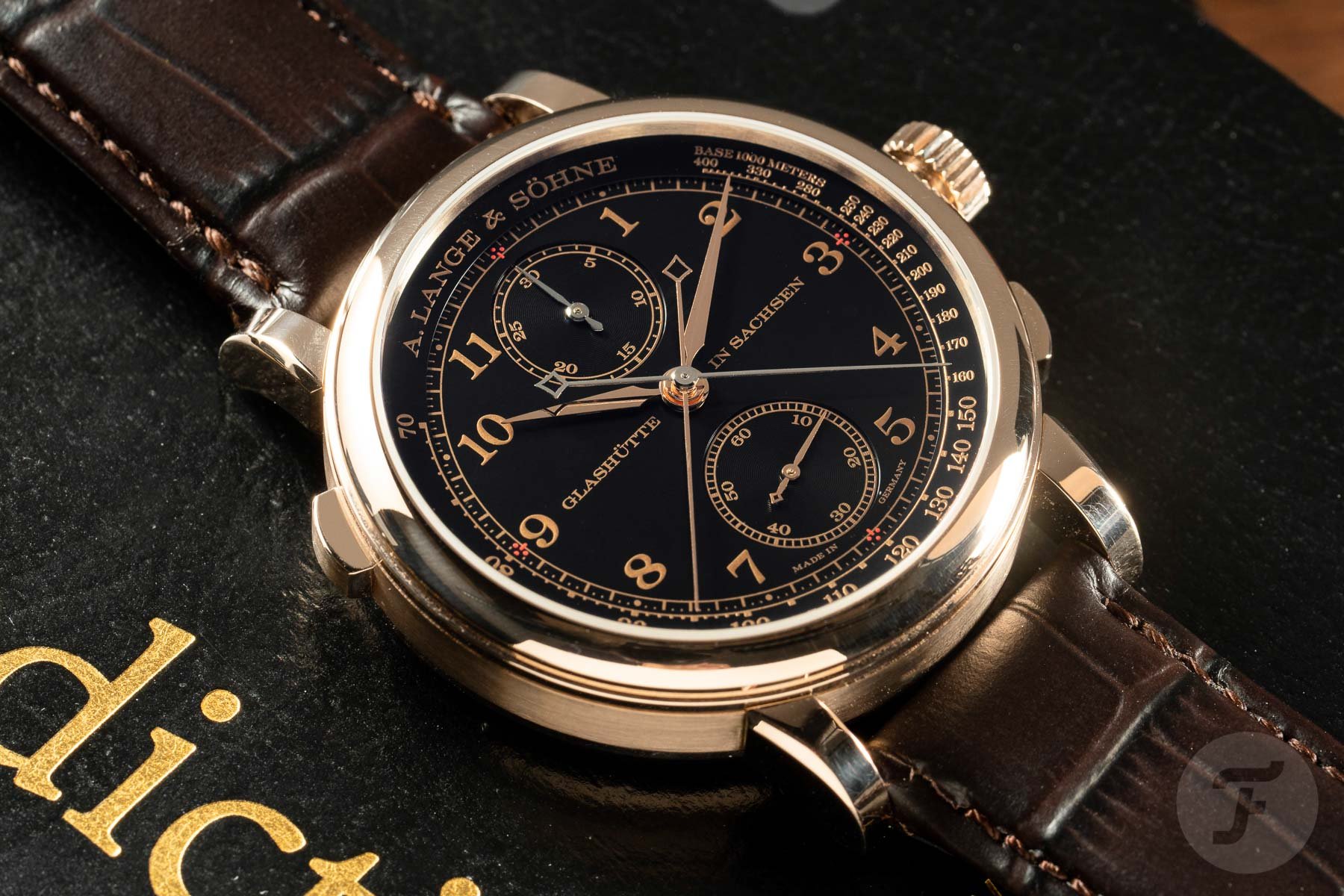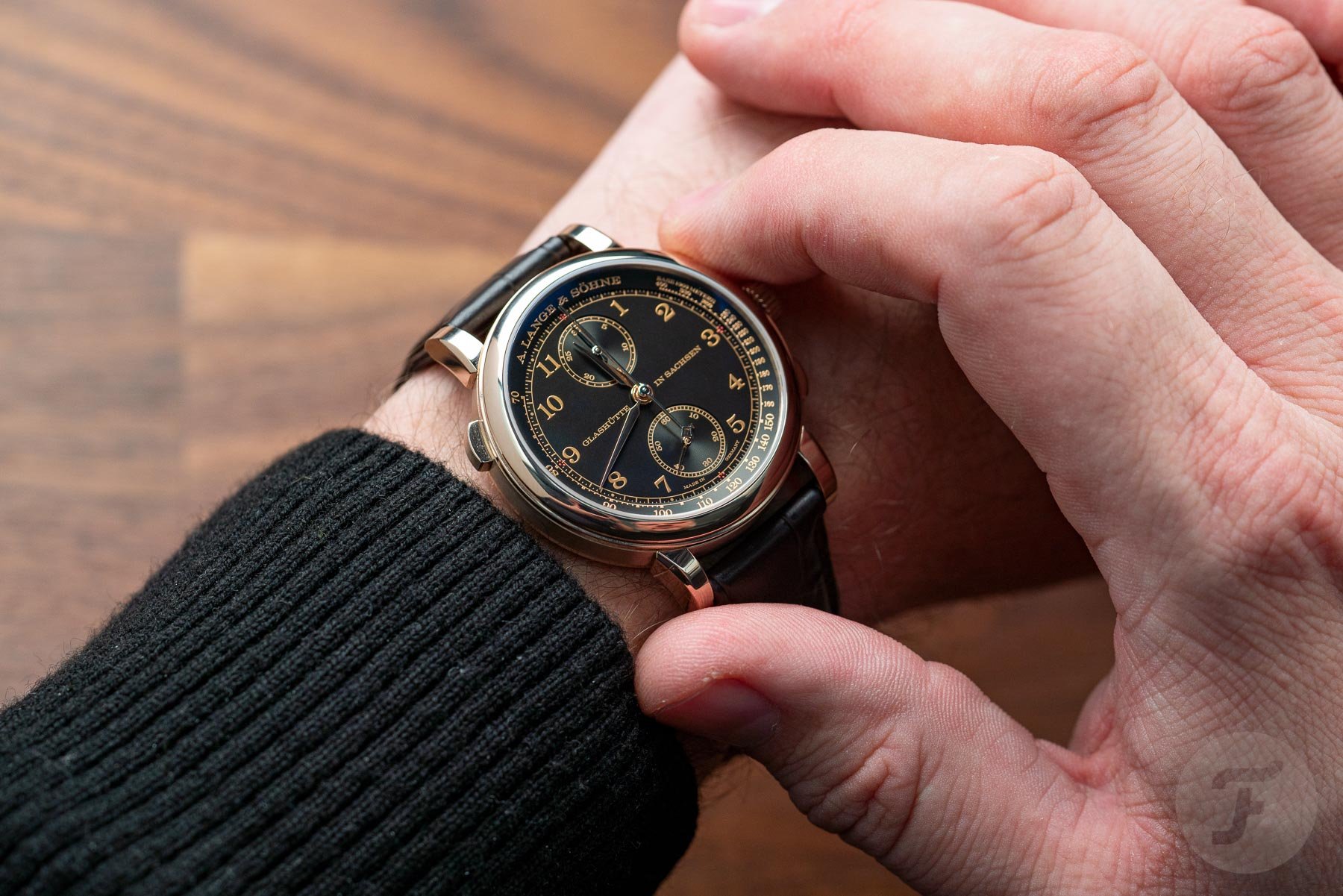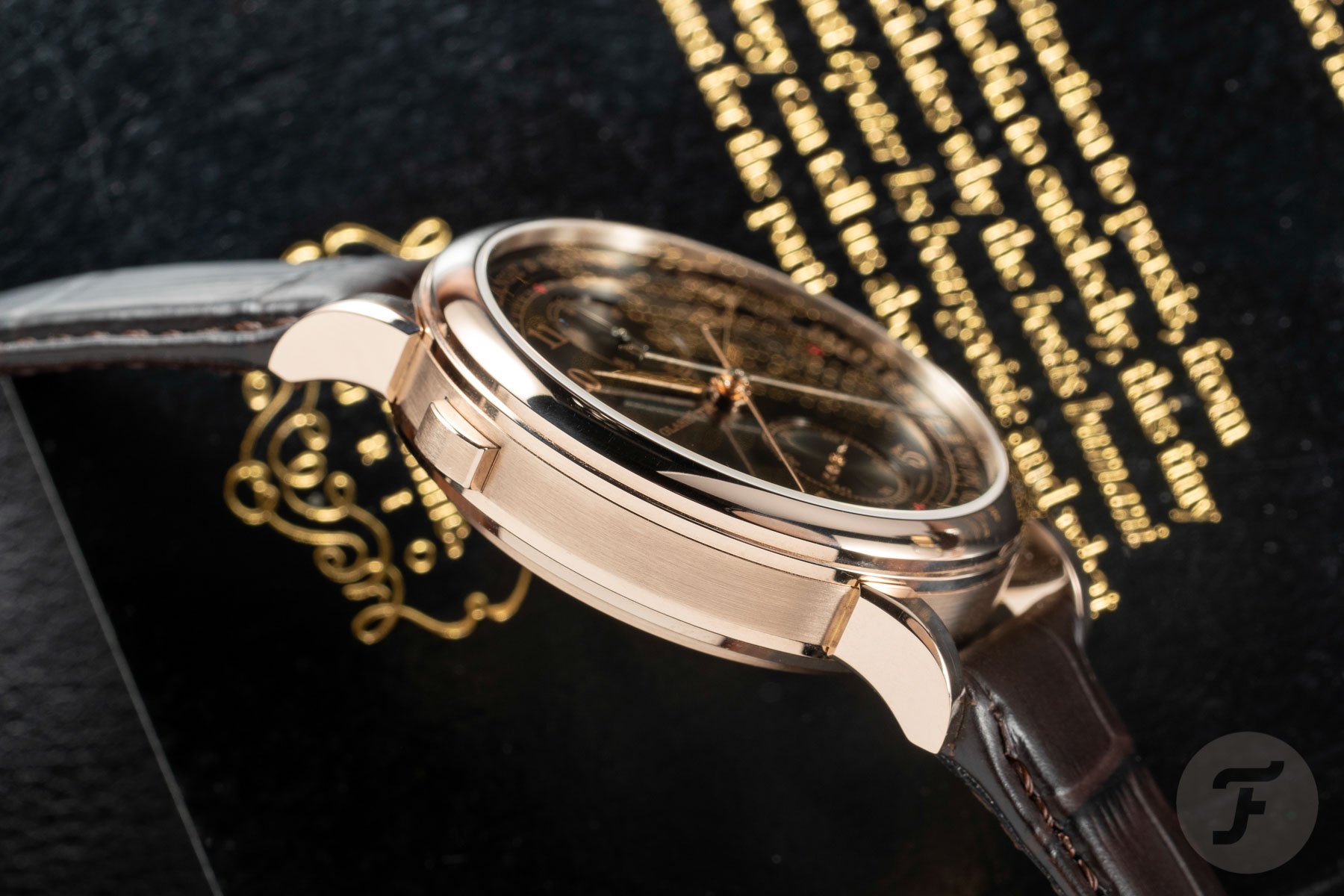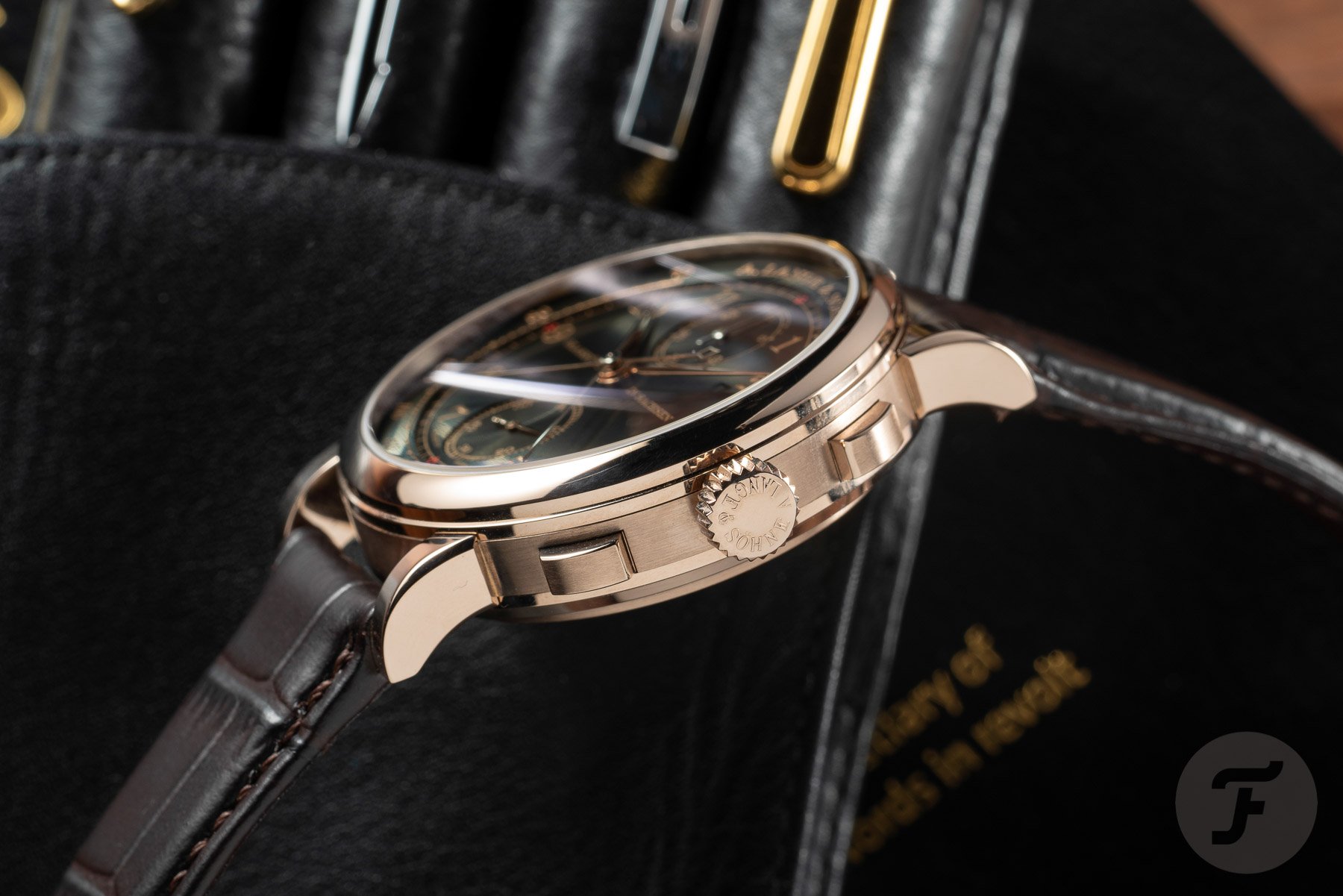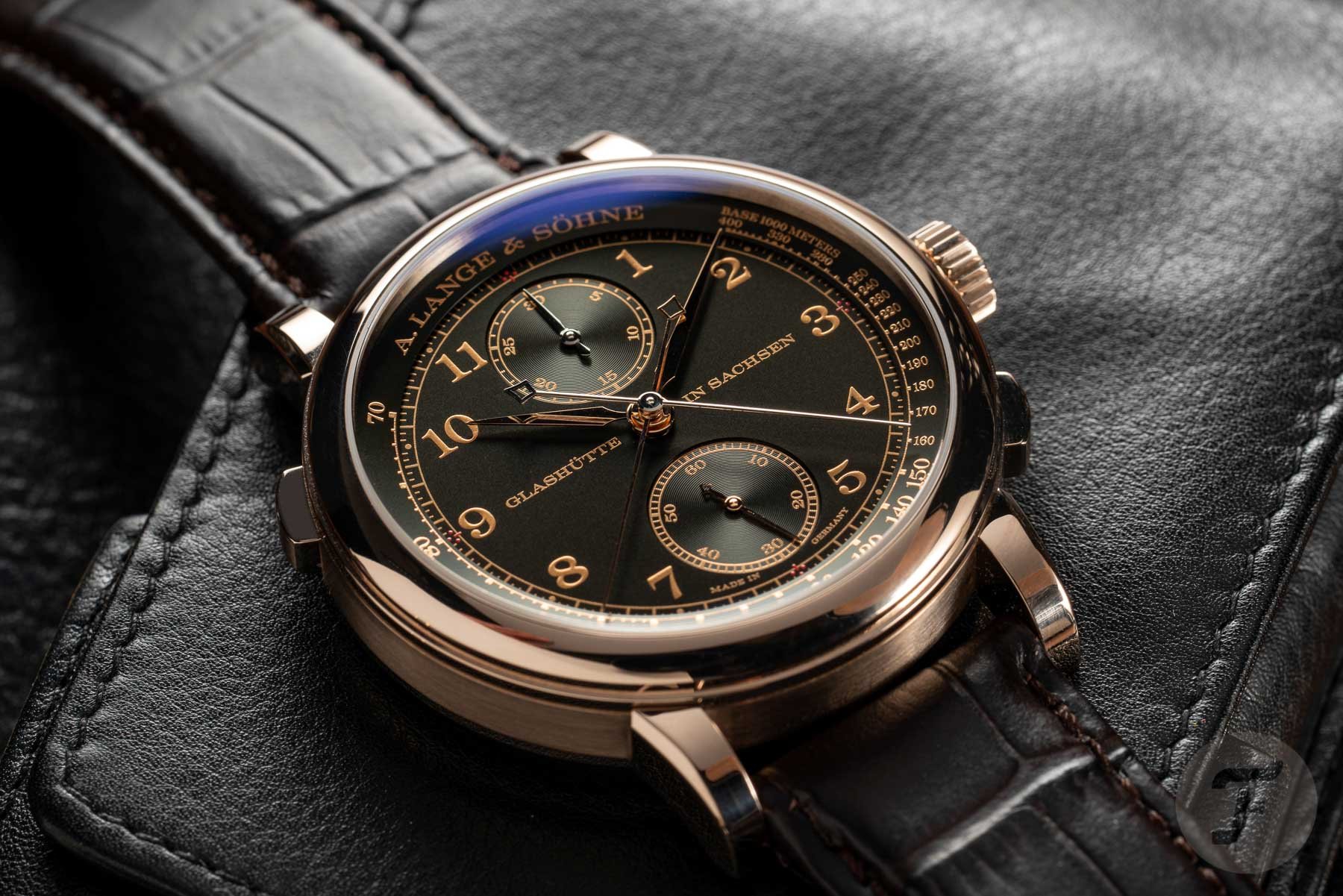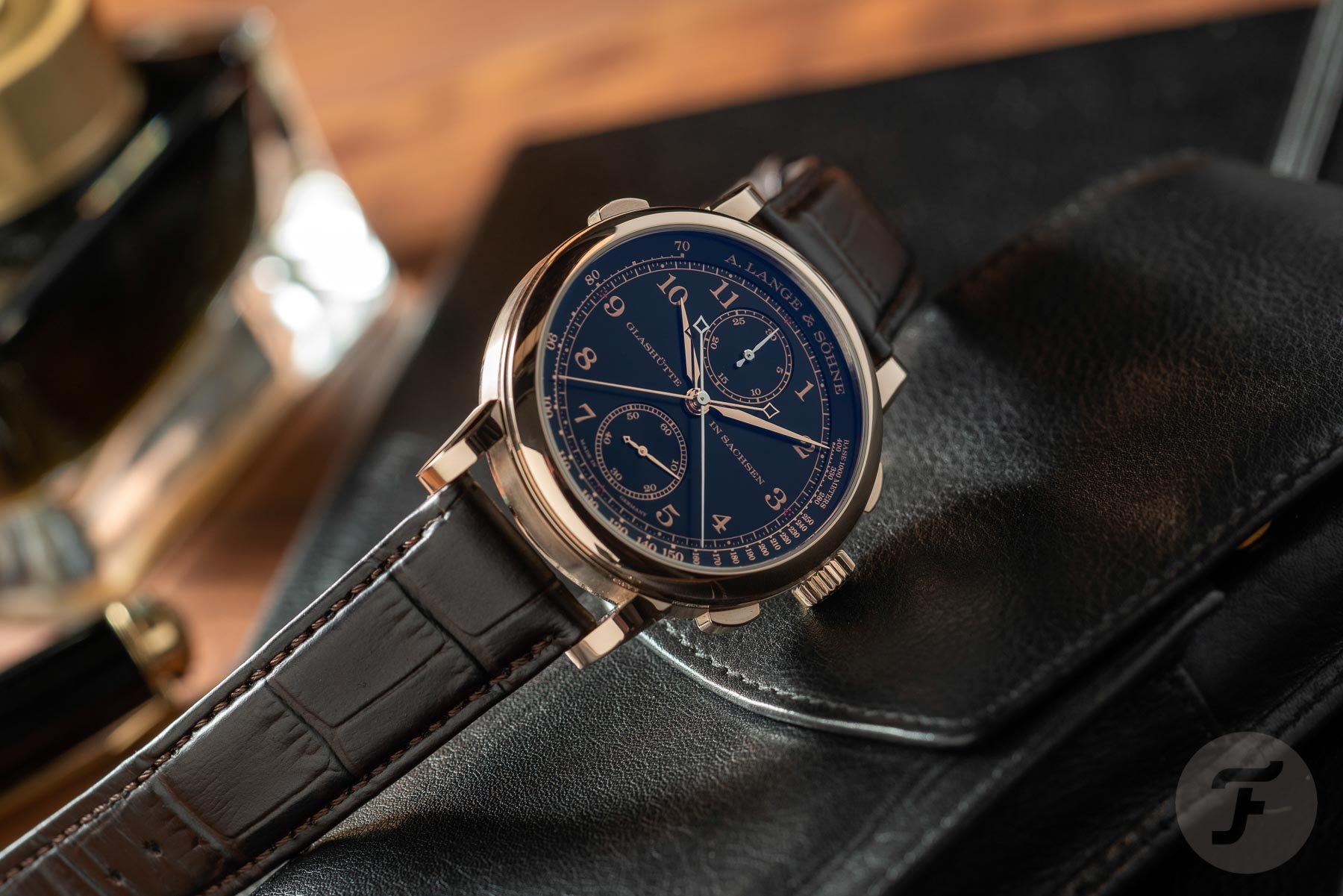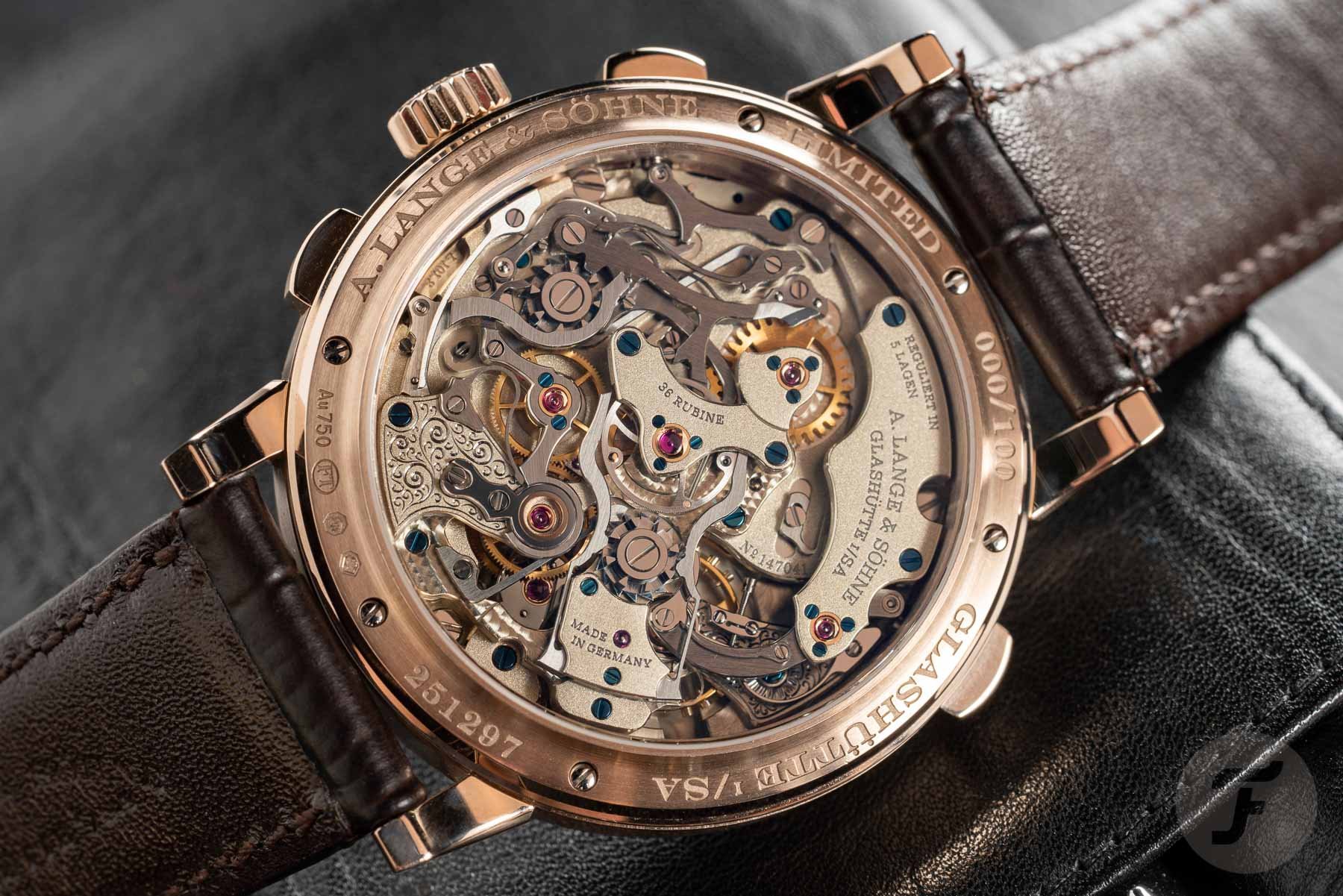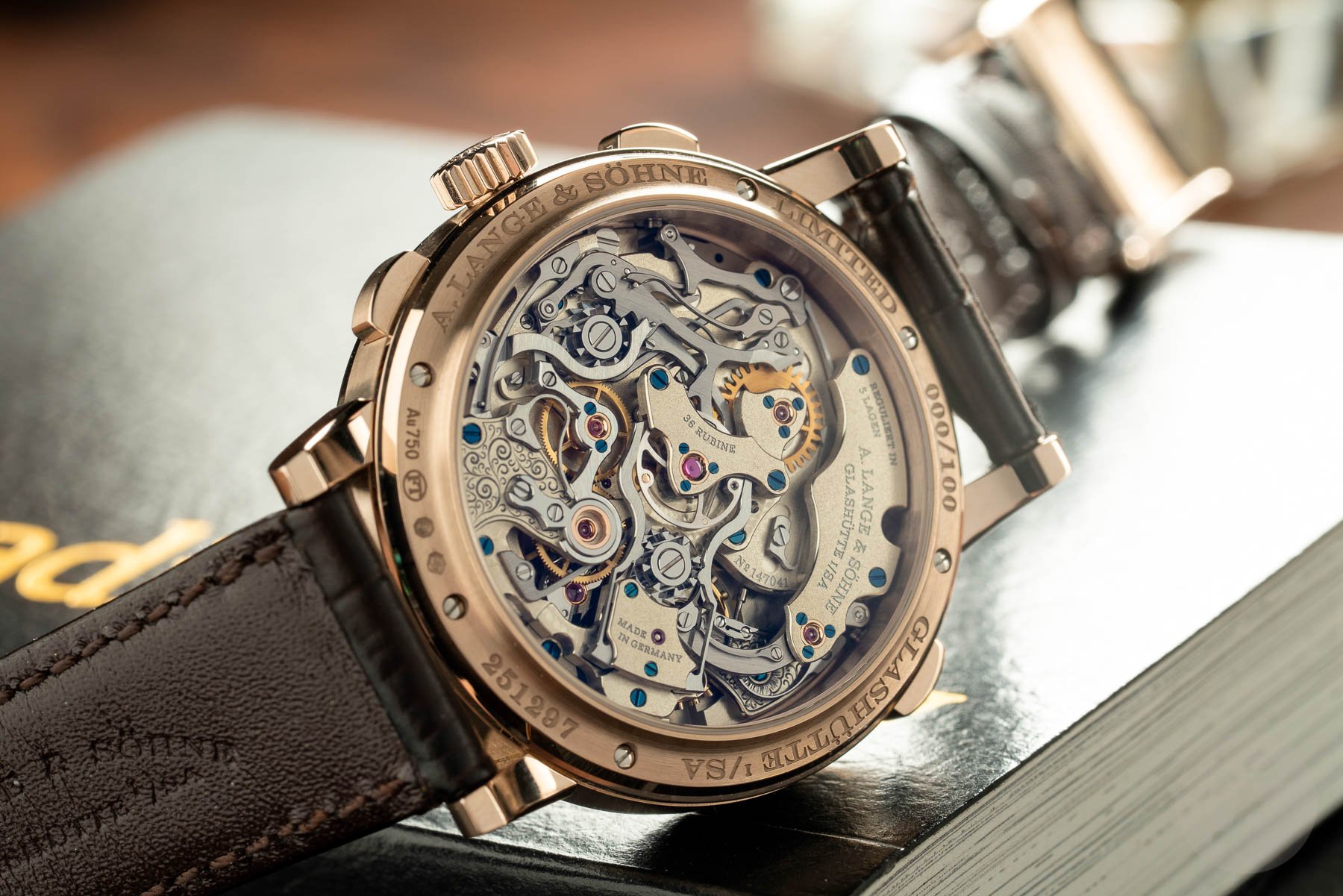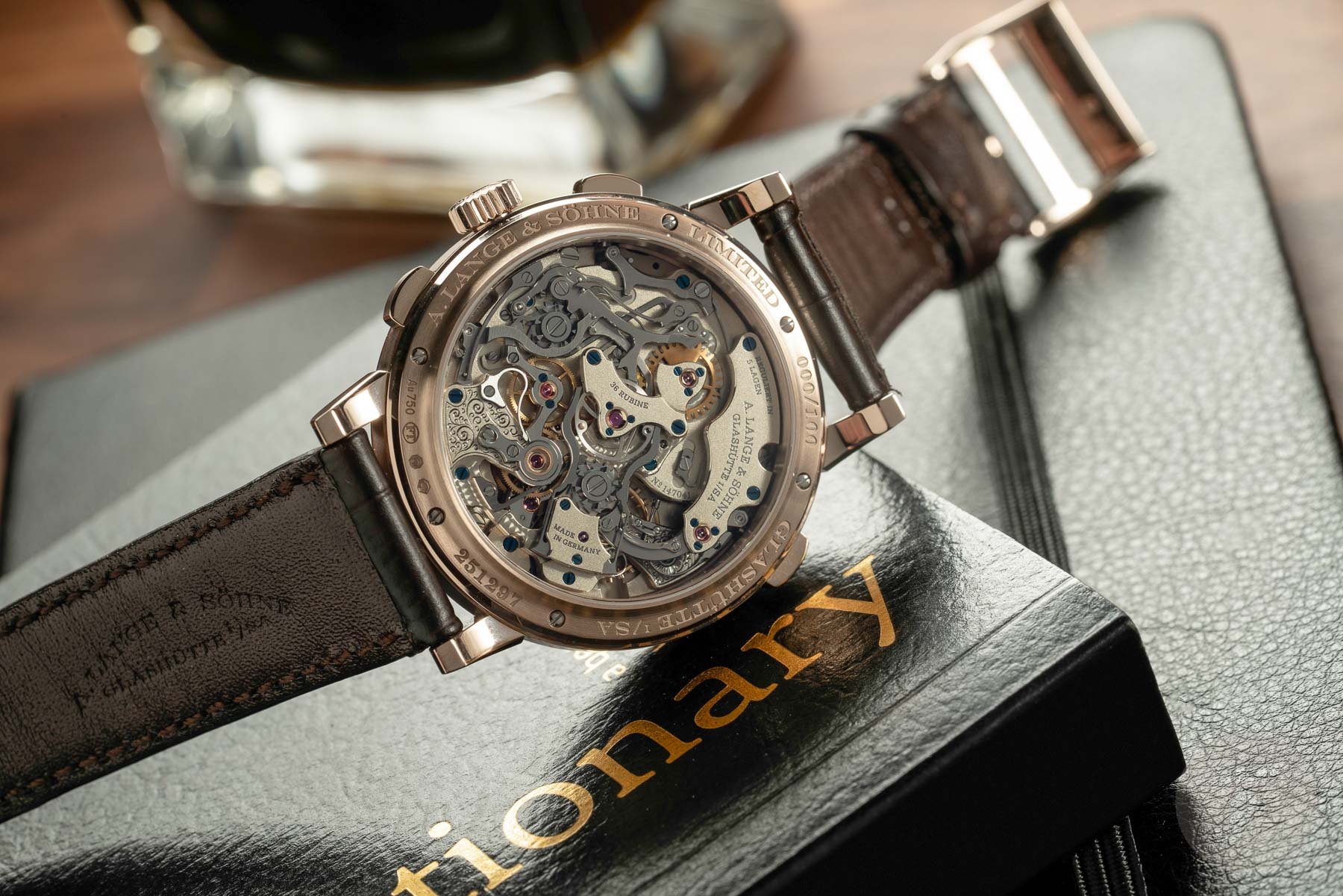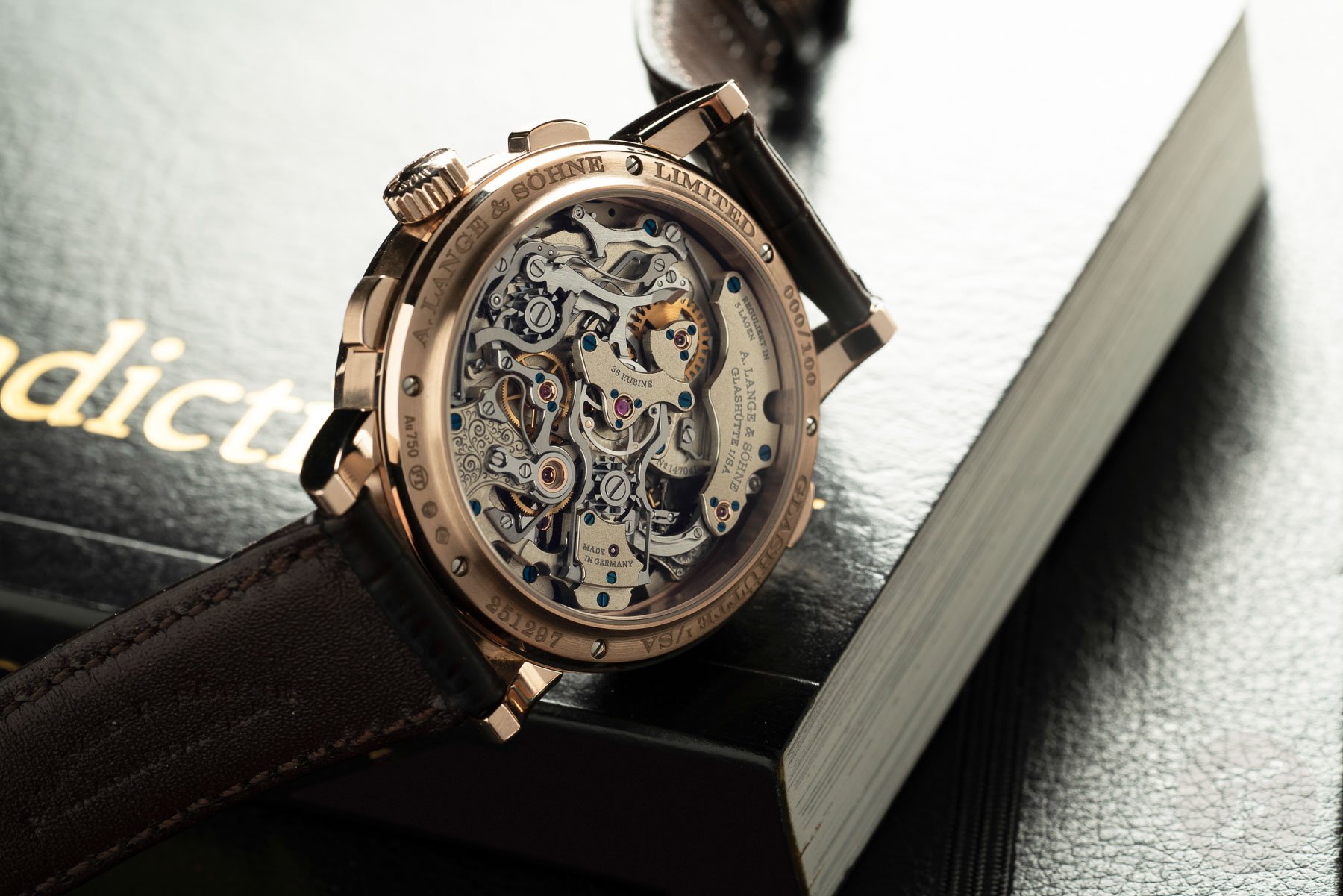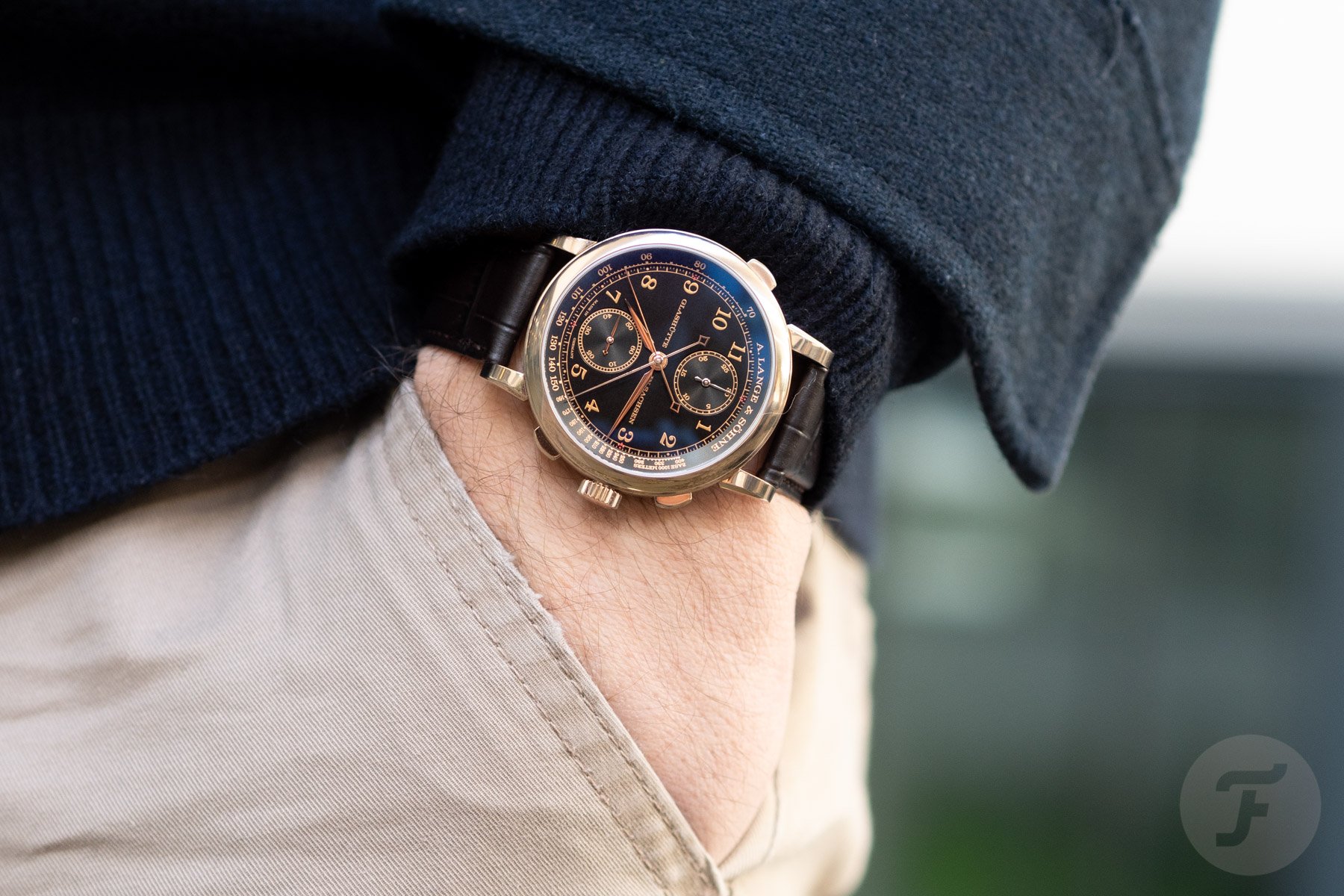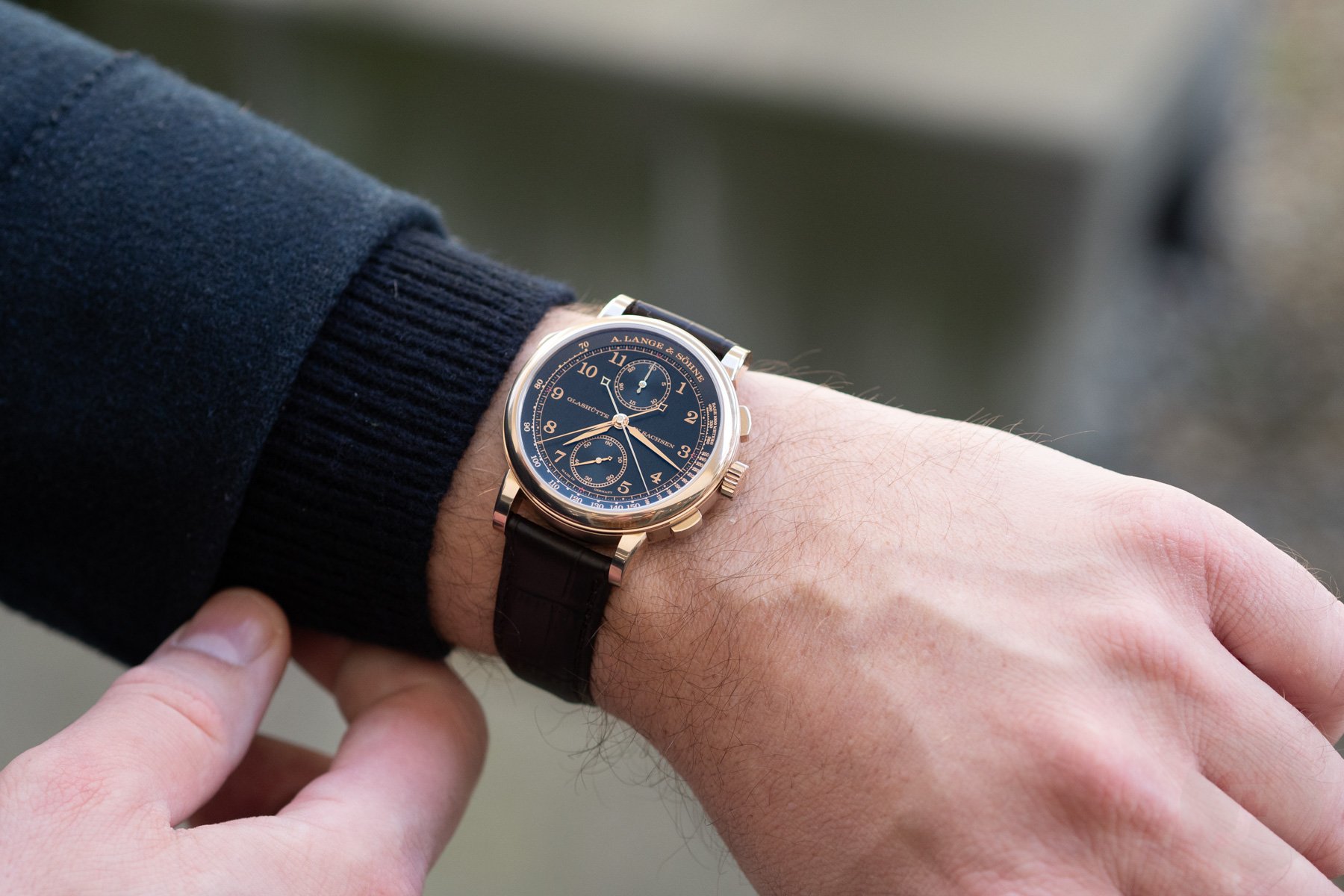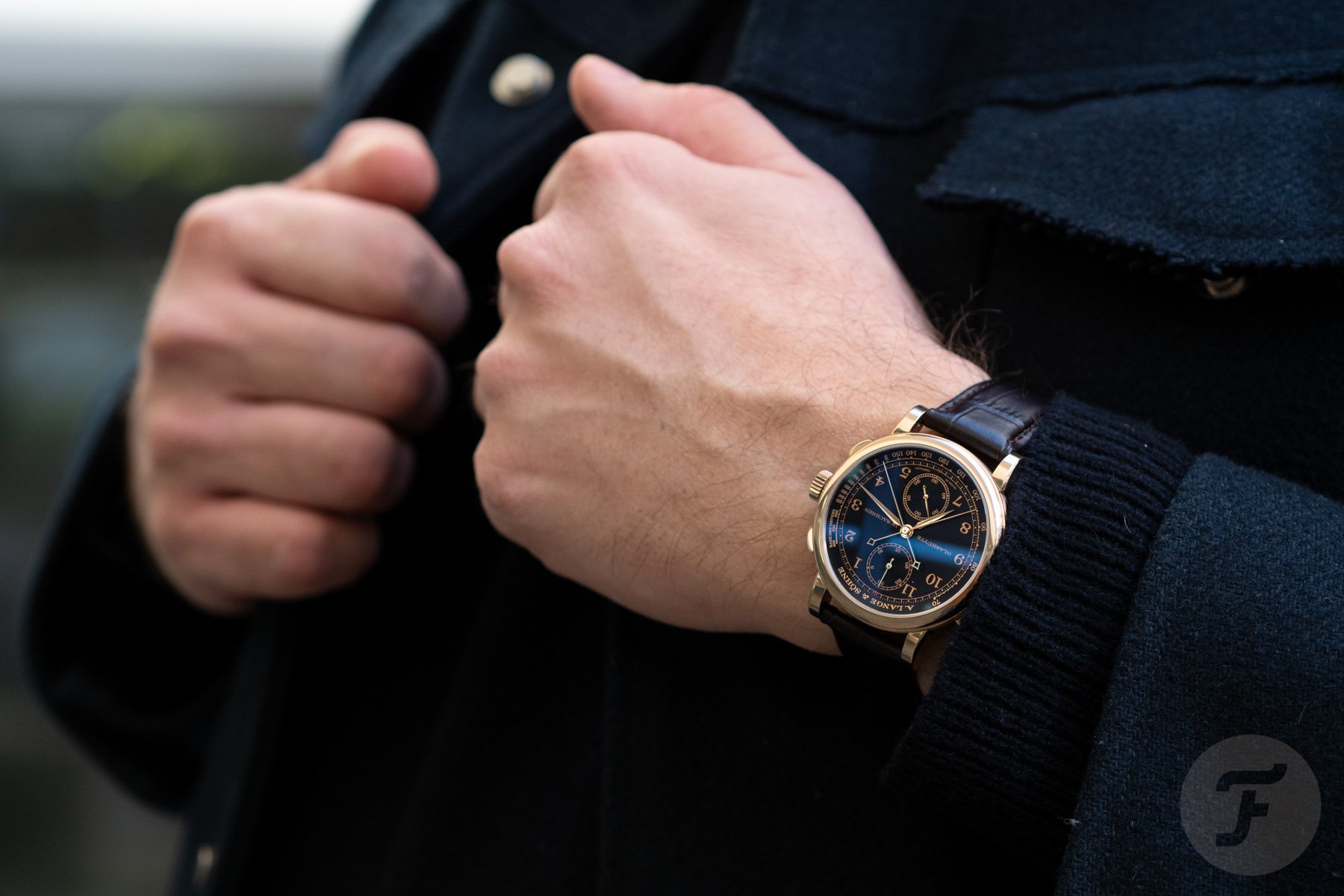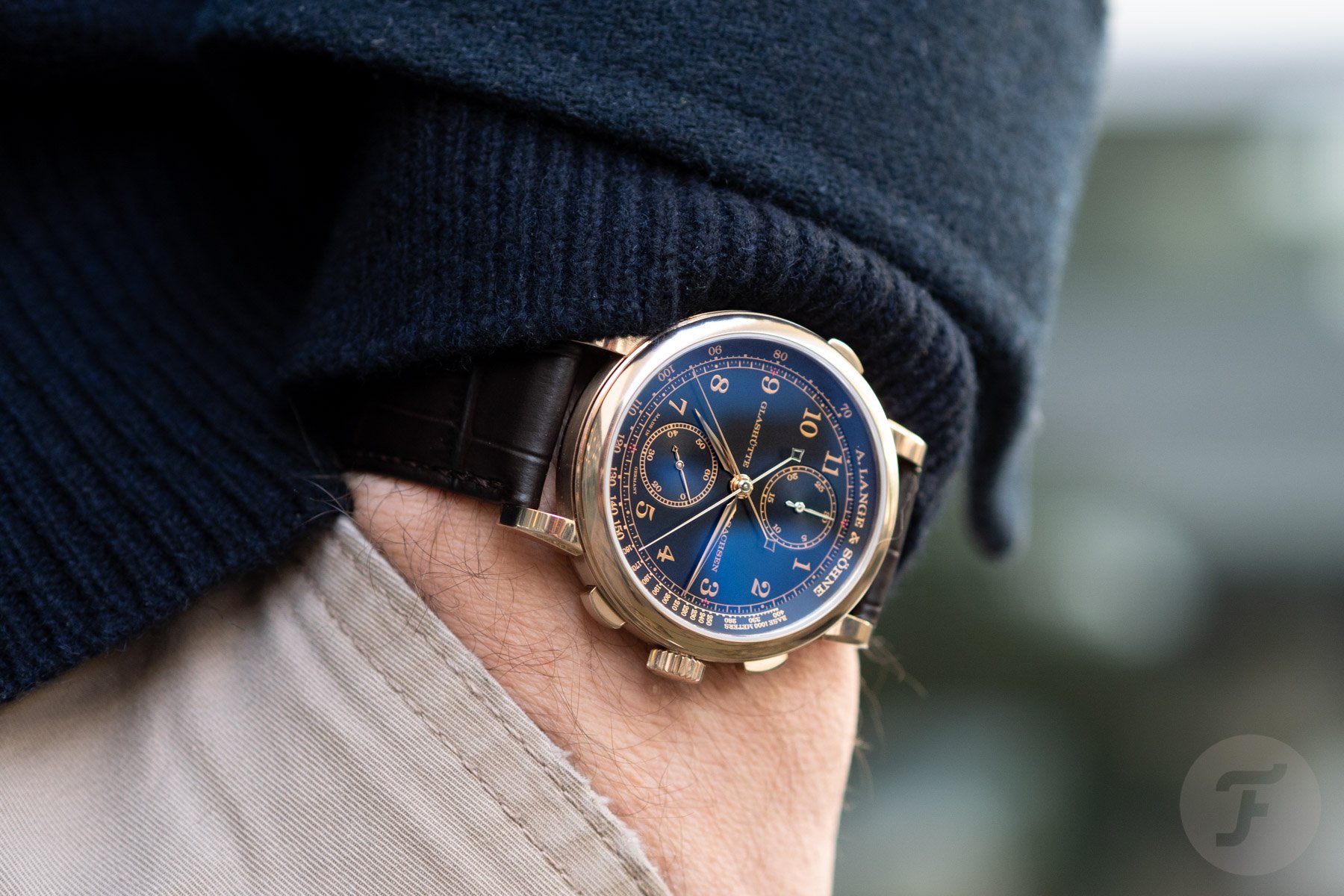How The A. Lange & Söhne 1815 Rattrapante Honeygold “Homage to F. A. Lange” Became My Unexpected Grail Watch
When I was asked to write my article about my grail watch, I didn’t answer immediately. The reason for that was personal but simple. Working as a watch journalist allows one to check out incredible timepieces up close. But the reality is that a great number of them are so expensive that the thought of wanting them doesn’t even arise. Call it Dutch level-headedness or maybe a Weppelink family trait because I recognize the tendency to be very down to earth in both of my parents. But there is one brand that passionately fights that family gene, and that’s A. Lange & Söhne. The brand’s 1815 Rattrapante Honeygold “Homage to F. A. Lange” feeds into the dream of lusting after something I will most likely never own. You can call it a dream or a fata morgana. In this series, however, it is called my grail watch.
You might have read the grail articles from some of our other Fratello team members in previous weeks. What I love about reading their articles is how my fellow Fratello teammates look at the term grail watch. They range from Thor’s explanation of how a grail watch represents an ideal of collecting watches to Gerard’s story of how the grail presented itself to him. I always knew there was something special about our Fratello resident father figure, but I would have never thought it would be a religious appeal.
What is a grail watch?
All jokes aside, it is fun to read what other guys on the team think about a grail watch. And I have to say that I can really relate to the stories that Gerard, Thomas, and Nacho wrote. Their stories have a sense of realism, and yet they still ooze that everlasting passion for watches. It’s the passion I feel whenever we talk about watches, whether we do so at the office or anywhere else. At Fratello, the love for watches is not merely a day job that stops when the lights go out and the door is locked. That’s what I genuinely love about our job.
When I think about a grail watch, I think about that feeling. That ultimate expression of my passion for watches. A passion driven by personal stories and a love for brands, their design, and technical wizardry. While it’s not about its monetary value, rarity, or status, I realize very well that my pick ticks those boxes quite effortlessly. But that’s not why I love the A. Lange 1815 Rattrapante Honeygold “Homage to F. A. Lange.” I’ll explain why I didn’t go for an Omega Speedmaster Professional from the year of birth or an IWC Ingenieur SL1832 ‘Jumbo’ or a Rolex Sea-Dweller ref. 16600. I love those watches dearly, but they don’t hold the same value.
A seal of quality
What I love about A. Lange & Söhne is that it is a German brand. There is a certain no-nonsense approach to the brand that is focused on simply creating the best watches, and that aspect of it feels comfortable for me. I grew up in a town not far from the German border, and my dad worked in Germany for 40+ years. We spent a lot of holidays in Germany as a family, I watched a lot of German TV (Schimanski from Tatort, anyone?), and we even preferred German radio over Dutch radio. Now, that was not necessarily a sign of good quality. Nevertheless, I grew up in a Dutch household with a certain German focus, and some of the Fratello team members will tell you that’s an understatement.
With that came the belief in German brands and German products as some of the best out there. Especially when it came to technical products, I grew up with the idea that German brands were simply the best choice. From car brands like Porsche, BMW, and Mercedes-Benz to brands like Rimowa, Montblanc, Leica, and even technical compasses from Rotring that my father used when he started his career as a draughtsman. But it went far beyond technical brands. Adidas and Puma were the leading brands in my favorite sport of tennis before Nike took over with Agassi’s Rock ‘N Roll Tennis. And the list goes on, but I think you will understand the basic idea of what has been imprinted in my brain: German brands produce good-quality products. The best example of that might be A. Lange & Söhne.
Made in Germany
A. Lange & Söhne CEO Günter Blümlein perfectly recognized the power of the phrase “Made In Germany” when he devised a plan to reintroduce the brand in the early 1990s. He wanted the brand’s motto to be “the best watches in the world from Germany.” The philosophy behind that translates to a technical approach to product development that is also a big part of the overall emotional appeal of the brand. We all know A. Lange & Söhne has created some of the most technically impressive and visually stunning mechanical calibers. It’s for that very reason that my grail watch deserves almost as much time off the wrist as it does on it. But Lange’s technical approach goes far beyond just its movements.
It is also present in the case and dial designs. When I started reading about the brand’s dial designs for the Buying Guide series, I found the same technical approach to design that I adore. The term “technical” might seem a bit cold — a geometric approach is probably a friendlier way of wording it. It gives purpose to design, and with technical products like watches, I love seeing a reason for design choices rather than just being beautiful. It’s that layer of logic that adds even more emotion. And if A. Lange & Söhne has mastered one art perfectly, it’s creating mathematical dials that have a soul.
How to incorporate soul into mathematics
A great example is the dial of the Datograph. As Alp from Langepedia perfectly showed, the dial of the Datograph features three perfect triangles that explain the design. It’s a design that at first might seem a bit odd because the sub-dials are placed lower than we are used to on most chronographs. That’s an issue that I struggled with for some time. But the more you look at it, the more you see a perfect balance. The placement of the sub-dials is relative to the big-date window, and they form a perfect triangle. Additionally, the three Roman numerals are perfectly in sync, forming another triangle. And if you draw lines between the 4, 8, and 12 o’clock positions, you’ll find the third triangle.
Another example is the dial of the iconic Lange 1, as I explained in my article about the best A. Lange & Söhne watches from the 1990s. The dial of the Lange 1 is based on the “rule of thirds” used in photography, filming, and painting to create greater energy and tension between elements while based on a mathematical principle. Another stroke of genius is the key to the incredibly well-balanced dial with its off-center elements. As I just mentioned, while the approach might be very mathematical, the dial designs have a soul. Much of that soul, for me, comes from the approach and the execution of the different elements. The way they are designed, the materials that are used, the color combinations, the execution — these elements shape the soul of Lange timepieces.
How to search for the grail?
As you probably have figured out by now, my grail is not just a matter of being blown away by a watch. I tend to rationalize a lot, and it’s likely why A. Lange & Söhne is also a brand that perfectly fits my character. But how did I come to think of the A. Lange 1815 Rattrapante Honeygold “Homage to F. A. Lange” as my grail? Saddle up for more rationalization. Because, unlike Gerard’s grail, this wasn’t a case of the watch just presenting itself to me. It took some convincing before I knew this was a watch of biblical proportions. In the wide world of watch complications, there are two close to my heart that I also love to use. The first is a GMT, and the second is a chronograph.
When it comes to Lange, you are treated to some of the best chronographs in the world. The 1815 Chronograph, the Datograph, the Double Split, the Triple Split — it’s like the Garden of Eden. While the Datograph is my favorite, I always looked for the right configuration and couldn’t find it. I love the combination of pink gold and a black dial. But the Datograph only comes in that combination with silver sub-dials, and although it’s hard to speak of a deal-breaker with a watch you will probably never own, it is a deal-breaker in terms of aesthetics. Enter the 1815 Chronograph that comes in that exact color execution. Earlier versions of the 1815 Chronograph in pink gold with a black dial also came with silver sub-dials, but in 2018, the brand introduced the updated version with a fully black dial and a pink gold case.
The 1815 Rattrapante Honeygold “Homage to F. A. Lange”
For about two years, that was my favorite A. Lange & Söhne. But I never referred to it as my grail watch somehow. I actually would prefer the Datograph for pure watchmaking bliss, but the 1815 Chronograph offered the right aesthetics. Overall, it was too much of a construct to be a grail watch. But then, in 2020, the brand introduced the 1815 Rattrapante Honeygold “Homage to F. A. Lange.” That was it! Or was it? Every time I glanced at images of the watch, I was blown away by its beauty. The combination of honey gold and black looked spectacular. But a second look would reveal my main issue with it — the vertical layout of the sub-dials. When it comes to chronographs, I much prefer a horizontal layout, so the upper half of the dial has room to breathe for the standard text that is placed there.
Would I be able to get past that one fundamental dislike? There was one design choice that indeed gave me hope. Lange applied a design principle with the vertical layout that I love and that brings great visual balance. I love how the designers balanced the sub-dials with the large “Glashütte In Sachsen” text. It’s a design solution the brand also uses for some of the Saxonia models, and I love it in those watches as well. But would it be enough? I could only answer that question by checking out the watch in person. Luckily, A. Lange & Söhne was kind enough to let me do just that. And in a way, like Gerard, I also experienced my grail watch presenting itself to me.
First impressions are lasting
Straight out of the packaging, the discussion of the vertical layout was sealed. Leave it up to the Lange design team to create a watch that is… perfect! Perfect to me, that is, obviously. I knew it when I first saw it. This was everything I could ever want from a watch and more. It starts with the visual impact of the watch. It’s utterly magnificent. The regular 1815 Chronograph comes with a 39.5mm pink gold case, but the honey gold case of the 1815 Rattrapante Honeygold “Homage to F. A. Lange” is bigger at 41.2mm. As it turns out, it is the absolute perfect size for my 18cm wrist. The case is 12.6mm thick, making the overall proportions significant, yet still very elegant.
Lange’s honey gold is unique in color and exclusive to the brand. It’s an interesting material in both its properties and appearance. After all, it is harder than other gold alloys, but there is also a fluidity in the color that stretches from almost white gold to a lighter version of rose gold. It completely depends on the amount of light and the angle from which you look at the watch. The side of the case perfectly shows its three levels. The case back ring and bezel are mirror-polished, and the case band is satin-finished, as we know from other Lange models. This visual difference in finish creates a nice contrast.
A case full of details
But the case is full of nice details that unveil themselves the closer you look. Another element that I love is the typical Lange lugs. I love how they play an important part in the overall style of the watch without defining it. The lugs curve gently to make the watch sit perfectly on your wrist. The three rectangular pushers in combination with the crown are also perfectly balanced with the size of the case.
The watch comes with a dark brown hand-stitched leather strap that is delightfully deceiving. It is dark enough to fool you and make you believe it’s black at first. But if look a little closer, you’ll see it’s a very nice shade of brown that works perfectly with the honey-gold case and the black dial. It’s one of those details that amazed me. My first thought would be to fit a black strap to the watch, which would look great, but the brown strap adds a bit more variety.
The dial is perfectly balanced
The black dial is made of solid silver, and it features the familiar 1815 design printed in gold. The quarters have small red markings that hardly stand out at first. Take another look, and you will see that they add just that right amount of zing to the combination of black and gold without standing out too much. When it comes to the dial layout, all my doubts immediately disappeared when I saw the watch. There it was, the glorious “Glashütte In Sachsen” wording. Consider it my horological version of “Made In Germany”, just like Günther Blümlein had intended. On top of that, it creates a perfect balance in combination with the two sub-dials.
The watch features pink gold hour, minute, and running-seconds hands, a pink-gold-plated steel chronograph hand, and a rhodium-plated steel rattrapante hand. The 30-minute counter at 12 o’clock features a white gold hand. It’s a stunning mixture of hands in different colors and materials. Because of the vertical layout, you can play with the two central chronograph hands to create a visual symphony of the brilliant handset. During the week I had the watch on my wrist, I played around with placing the rattrapante hand in one spot first, then stopping the main chronograph seconds hand to try to visually balance them with the hour and minute hands. I know, it sounds like childish play. But my boyish enthusiasm made wearing and interacting with the watch so much more fun.
The stunning Lange Calibre L101.2
Responsible for that magical play of hands is the Calibre L.101.2 that you can see through the sapphire display case back. The manual-winding movement consists of 365 parts with 36 jewels, operates at 21,600vph, and has a power reserve of 58 hours when fully wound. Through the case back, you can see how the rattrapante chronograph movement is layered. Centered on the top level and on full display, you will see the rattrapante mechanism with its column wheel, a central wheel, and the characteristic clamps to stop the motion of the rattrapante hand.
The middle layer of the movement is in charge of the chronograph mechanism. The main column wheel is visible near the crown, and the mechanism is composed of multiple curved levers, springs, and wheels. All the way at the bottom, you will find the layer of the movement responsible for timekeeping, energy storage, and transmission. It features the regulating organ, the gear train, and the barrel. Overall, it’s an absolute joy to look at the movement, especially its immaculate finishing.
The “Homage to F. A. Lange”
The “Homage to Ferdinand Adolf Lange” collection was released in 2020 to celebrate the 175th anniversary of the brand. All three 1815 models in the collection feature a honey-gold case and special decoration of the movements reminiscent of F. A. Lange’s historic category 1A pocket watches. The finishing is, therefore, slightly different than on the regular models. The granulated finish of the four bridges with their black rhodium inscriptions is specific to the “Homage to F. A. Lange” models.
The freehand engraving technique used for the bridges is also used for the balance cock and the chronograph bridge. Furthermore, all the levers, springs, and jumpers are finished with straight graining, and the chamfers are nicely polished. I don’t have to tell you that looking at the movement is a true joy. I spent a lot of time watching the movement in action, activating the chronograph mechanism, and simply enjoying the looks of every visible part.
The final confirmation of grail status
This has become quite a long story that is partly a review and partly an explanation of what makes this watch so special. But when do you know that a watch is your grail? I knew it the moment I put this watch on my wrist. That is when everything clicked. The size is perfect for my wrist, and the overall design looks incredible. The materials and finishing are breathtaking, and the colors are exactly how I want them. And the movement itself is absolutely stunning with its great rattrapante chronograph functionality that I didn’t stop using.
But most of all, I felt a certain sensation of personal perfection, which manifested itself on different occasions. For instance, while all the Fratello members in the office were incredibly impressed by the watch, pretty much all of them would pick other A. Lange & Söhne models over this one. But I wasn’t even listening to their words because I was too busy staring at the beauty on my wrist. No words from others could change my mind.
The perfect proof of a technical approach turned into emotion
Additionally, it felt like “my” watch from the moment I put it on. I wore the watch for a week, and I was surprised how quickly I got used to wearing it despite it being a €132,200 watch made of exclusive honey gold. In some moments, I was brought back to reality and recognized how special and exclusive the watch is with only 100 pieces made. But most of the time, it felt like it was meant to be on my wrist. Additionally, the rattrapante chronograph turned out to bring even more joy than a normal chronograph already would.
When I mentioned that this watch is everything I could ever want from a watch and more, this functionality is what I was referring to. The split-time capabilities of the movement add an extra dimension to the watch that I greatly enjoyed. I don’t have to tell you that the pushers are a joy to operate. The action is flawless. Starting the chronograph with the top-right pusher, stopping the rattrapante hand with the top-left pusher, and stopping the chronograph hand by pushing the top-right pusher again is simply magical. Wearing, admiring, and interacting with this watch was the first experience I’ve ever had of realizing a grail. That is why this A. Lange & Söhne 1815 Rattrapante Honeygold “Homage to F. A. Lange” is my grail watch. It is the perfect manifestation of a technical approach turned into pure emotion. Made in Germany.

